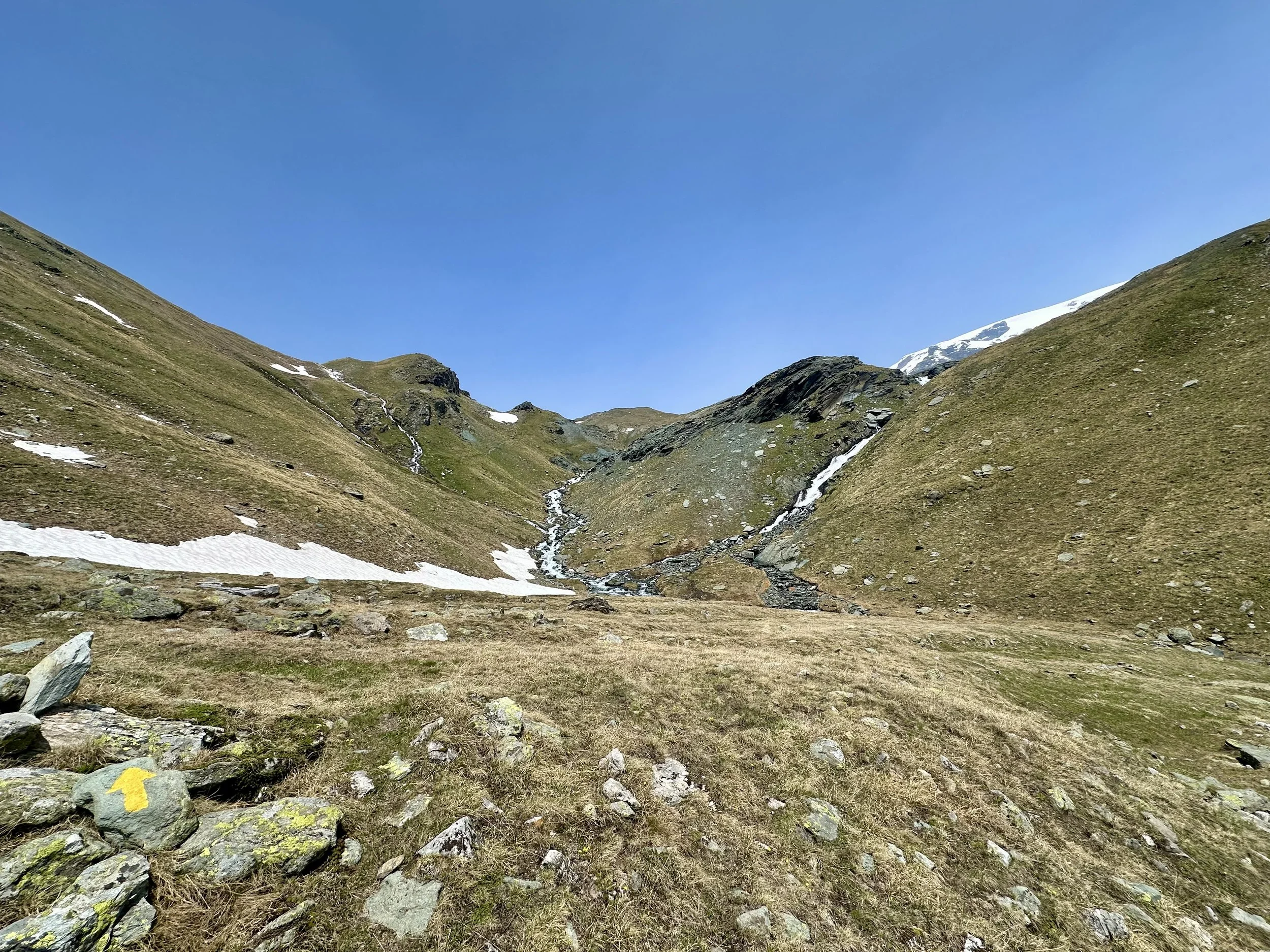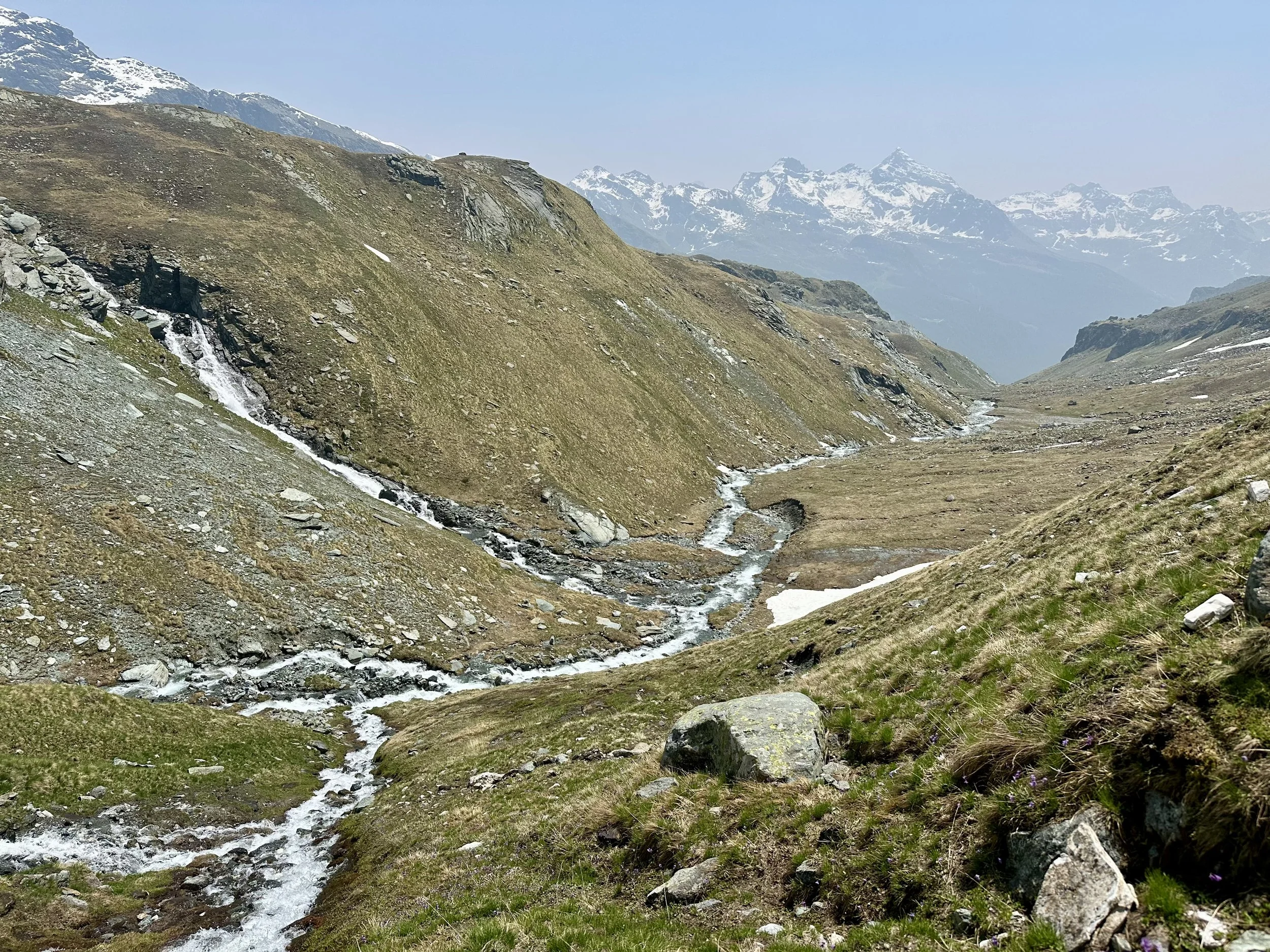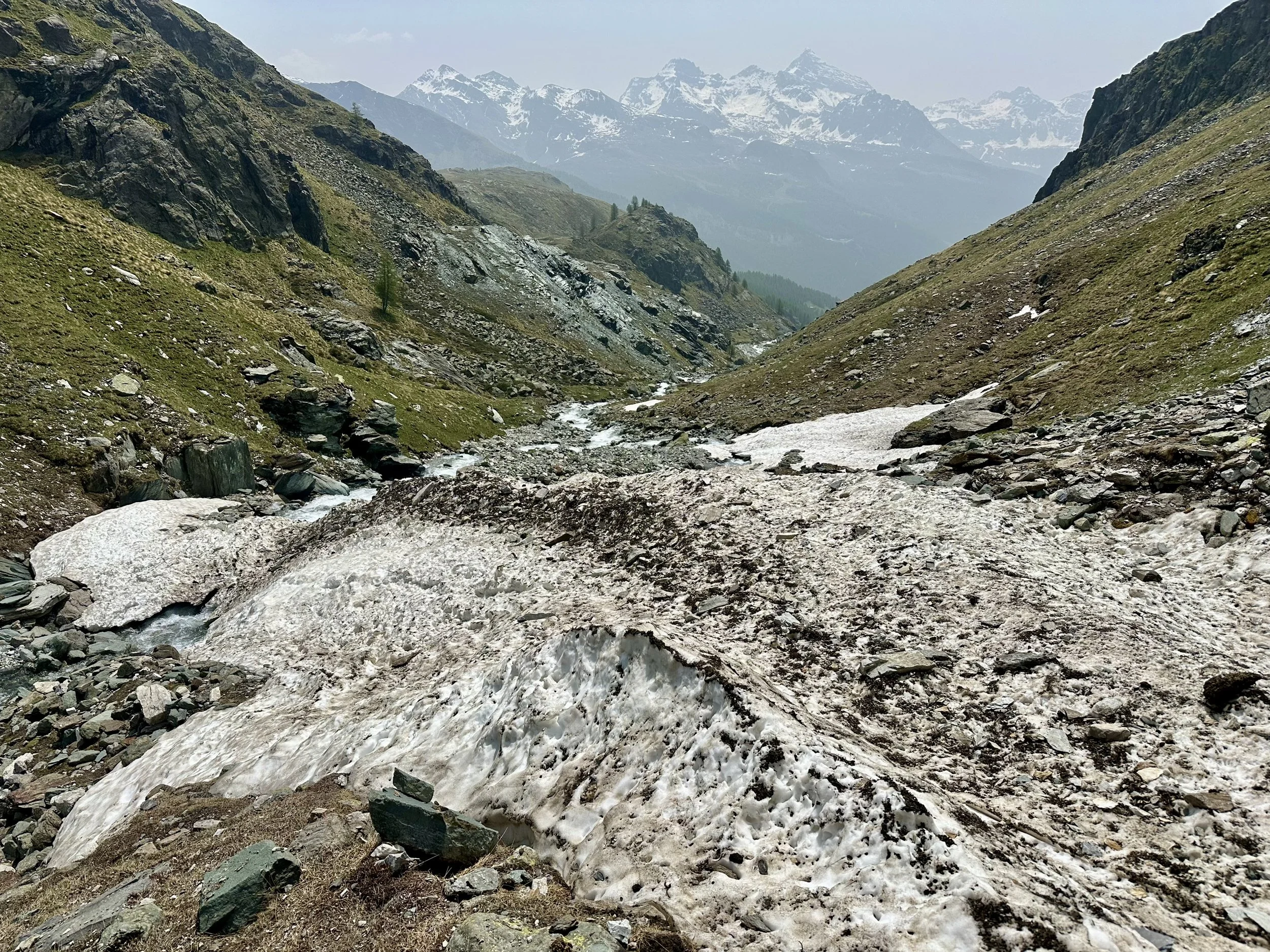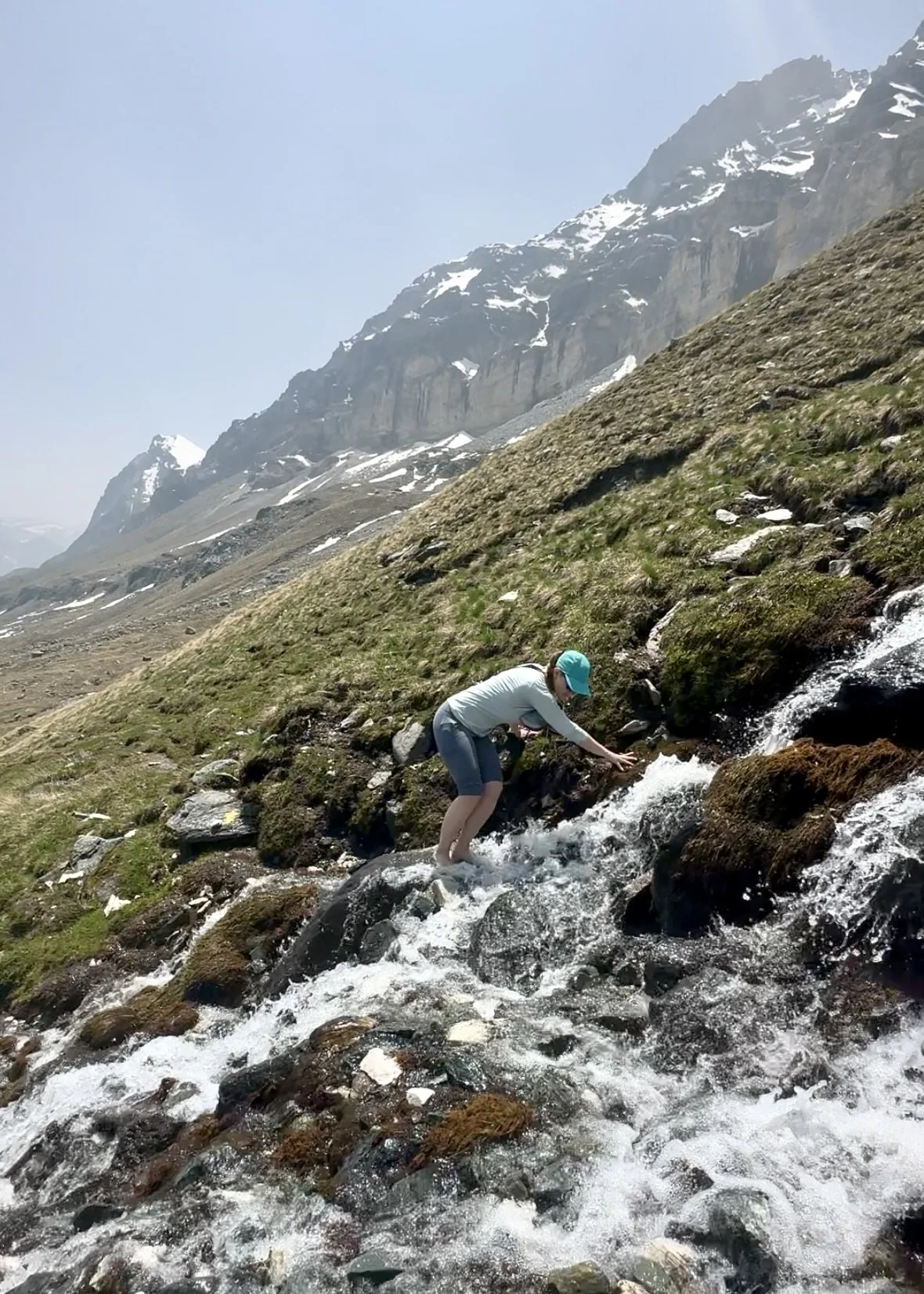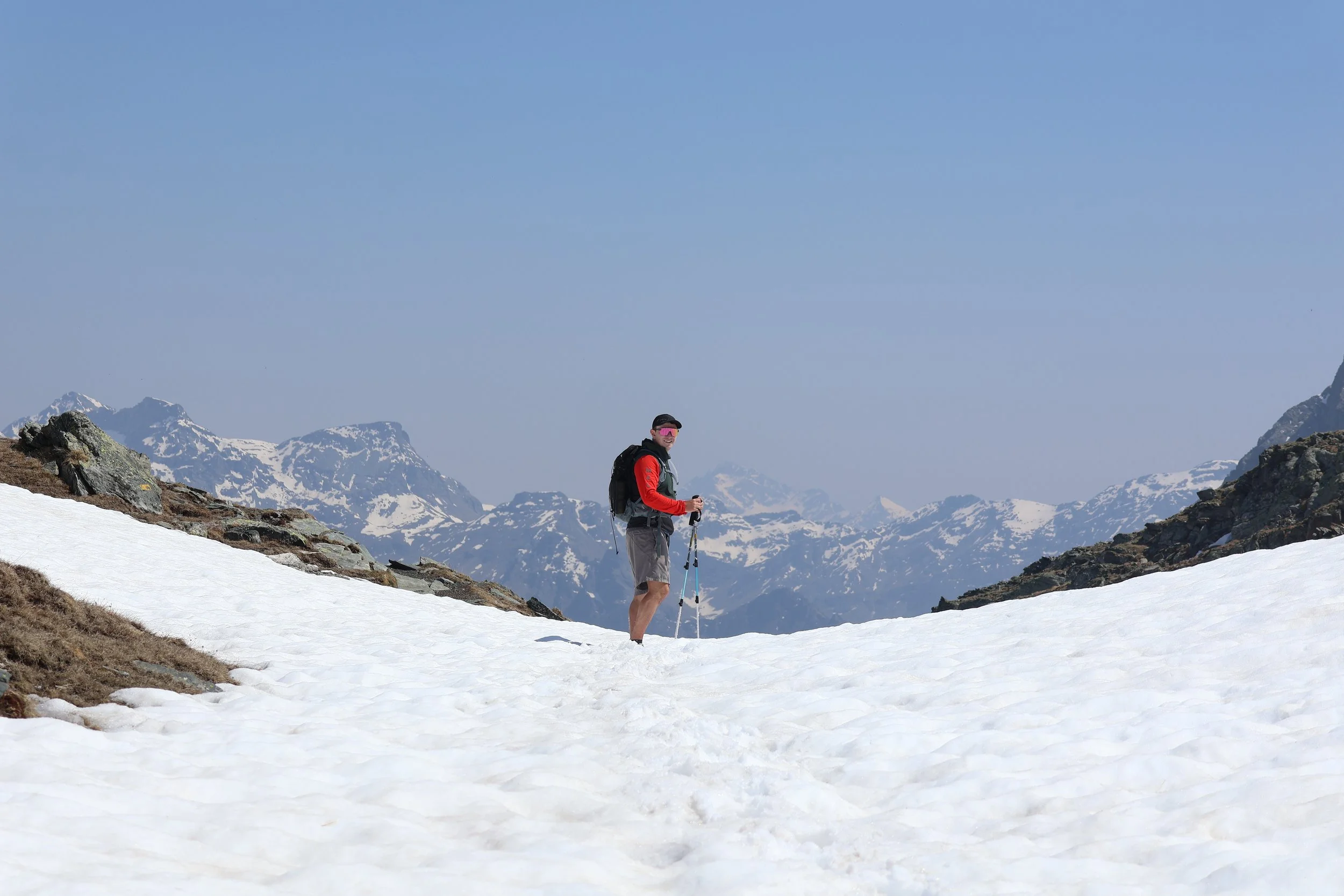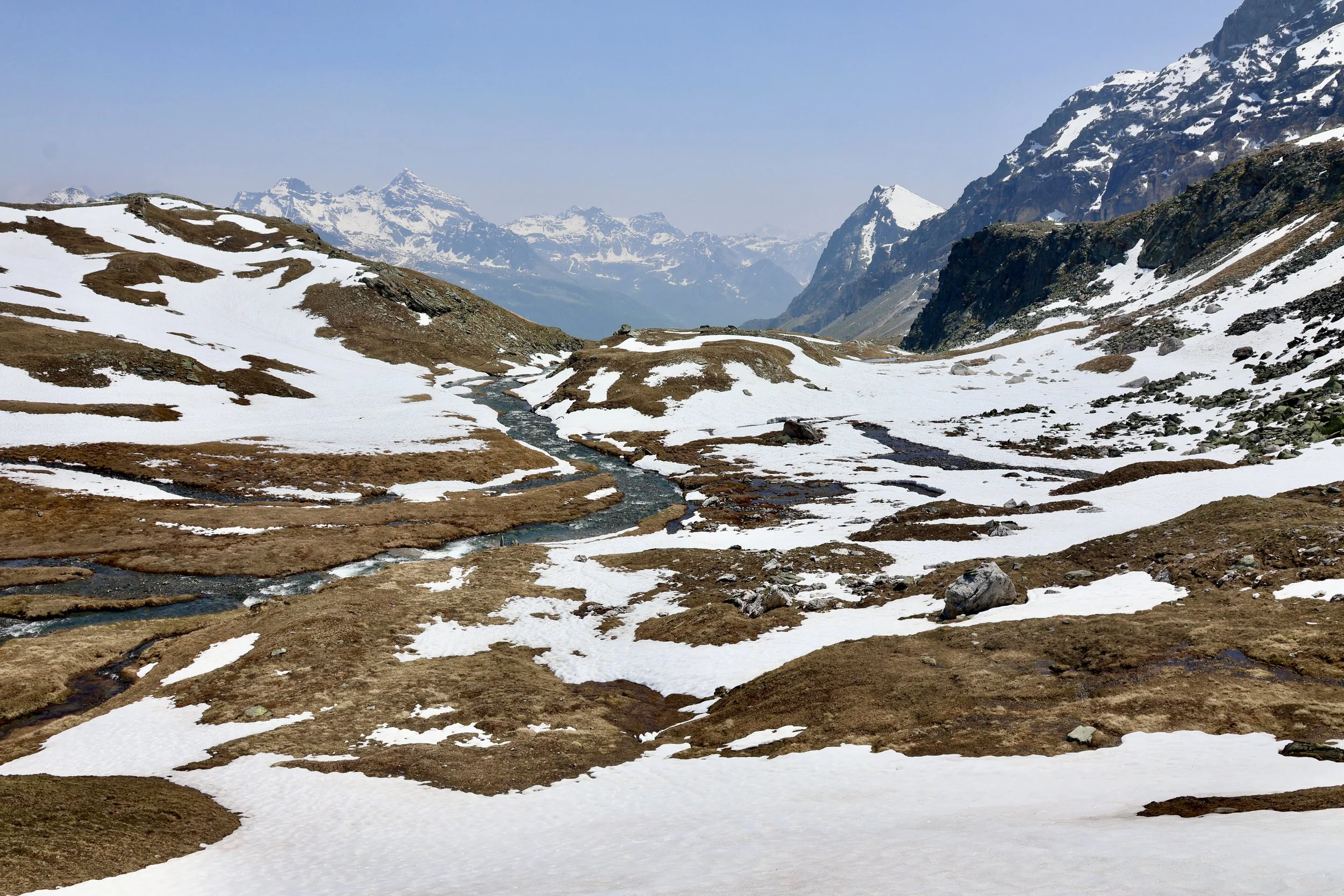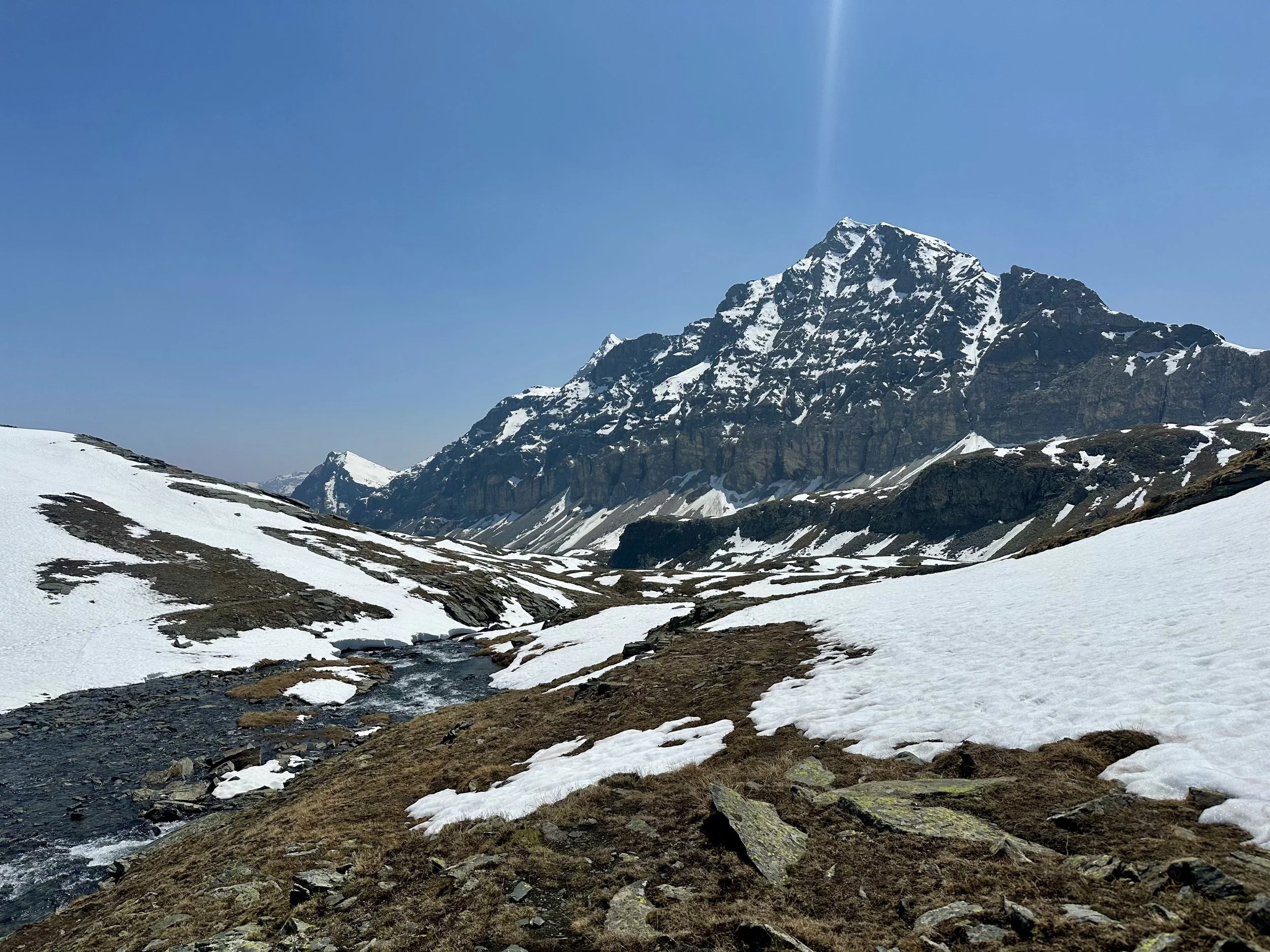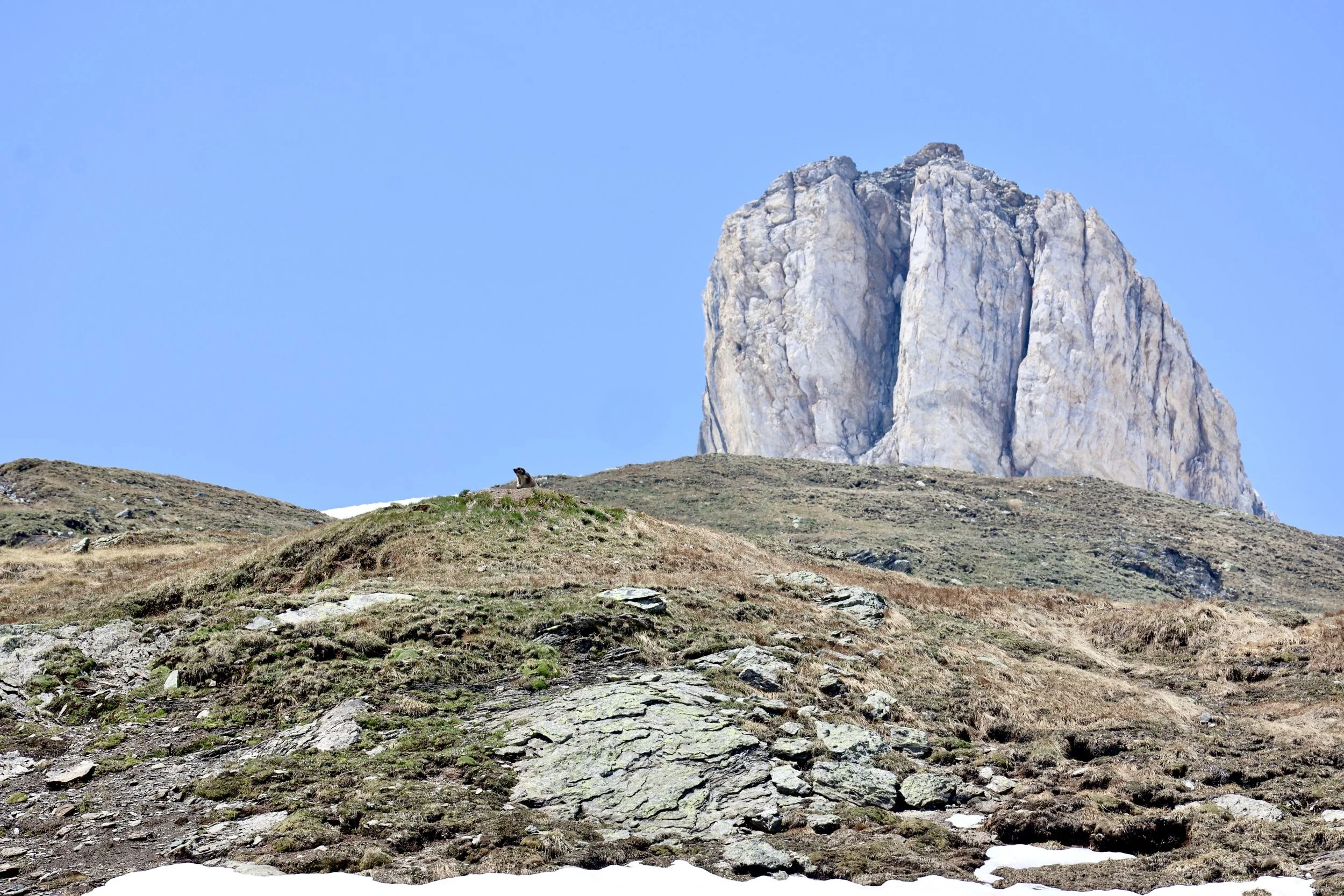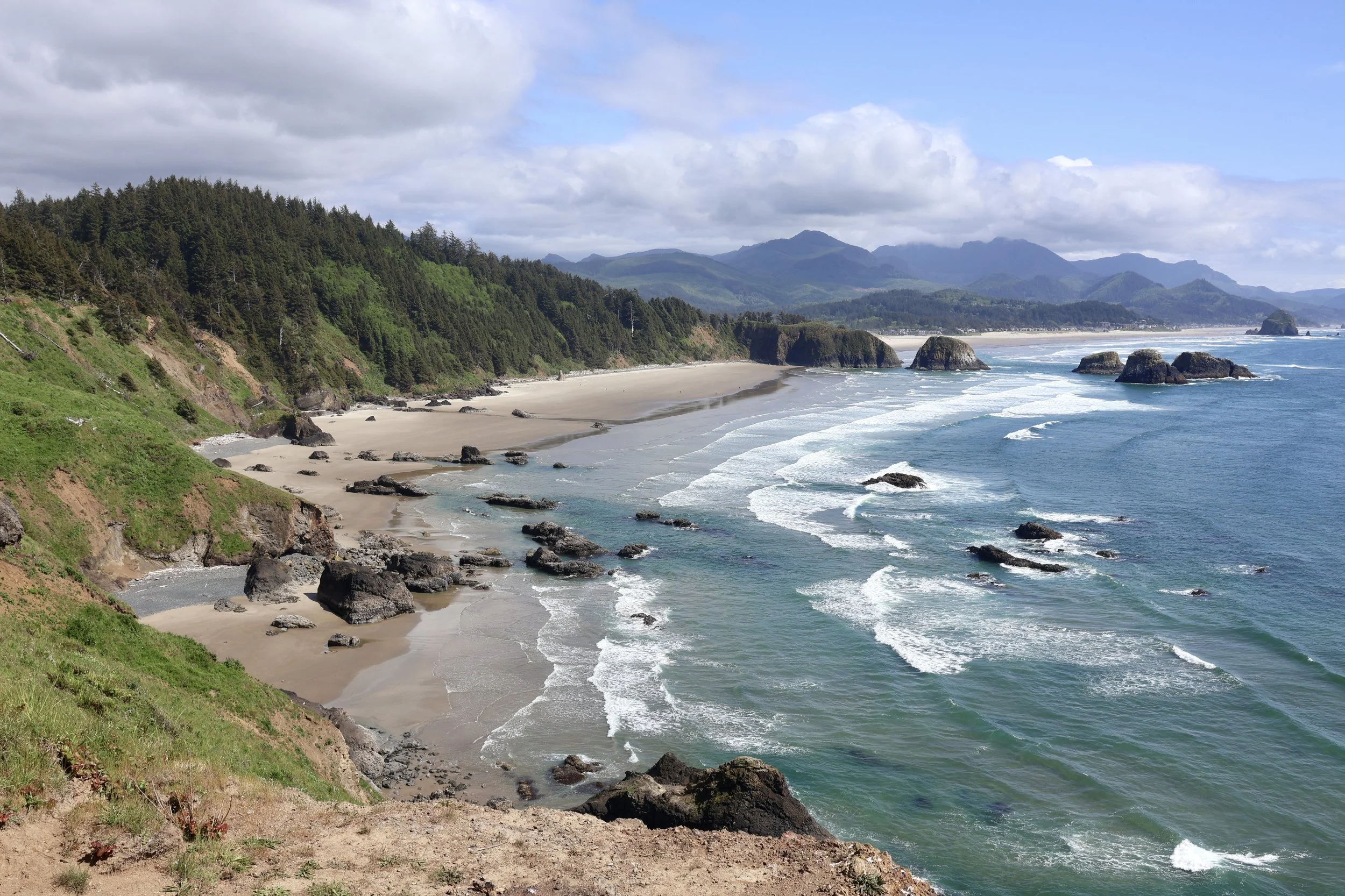When the Path Disappears, Keep Walking
With the trailhead lot full in Champorcher, we asked our hotel to drop us at the base and told them to expect us back by five.
We wouldn’t return until seven.
The climb in Gran Paradiso National Park began on asphalt, turned to stone, and finally gave way to dirt. Soon, we branched off onto a less-traveled path, following bent grass instead of a well-worn trail. From that point until the last hour of our descent, we didn’t see another soul. Where was everyone?
We trekked through meadows of wildflowers and hushed forests until mountain peaks surrounded us. The trail dissolved into grassy fields, with only the occasional spray-painted X on a rock to reassure us we were going the right way. Then even those faded beneath patches of snow. From then on, the only path was the one we carved ourselves.
Yellow trail marker to point the way
I followed my partner blindly, aware my nonexistent navigational skills wouldn’t help much. That’s when he told me the only way forward was to cross a waterfall.
Excuse me? Barefoot across glacial water rushing down a steep mountain? Absolutely not. I sat crouched on a rock, watching him cross, waiting for my stubbornness to make another path materialize.
But it was either across or not at all. So, I slung my shoes around my neck, rolled up my pants, and submerged my feet beneath the glacial feed. The view downward was more chilling than the water. I surveyed each step with my toes before committing my full weight, not wanting to turn this into a water slide.
The final push upward took us into a vast snow bowl, with Switzerland just over the ridge. We debated climbing another hour or two to the top, but a late return was already certain. Instead, we angled across the snow in a broad cardinal direction, shoes soaked from rivulets streaming down the mountainside. Most of the snow was packed enough to make it across, but every once in a while I got a jolt of surprise as my leg postholed through the snow up to mid-thigh.
I’m not sure what the most anxiety-inducing part of the hike was. Losing the trail? The barefoot waterfall crossing? Postholing through the snow? None of these things were so unnerving on their own, but I couldn’t help but notice that we were doing them with no one else around for miles.
The return, we realized, was much easier than the ascent. The trail was clearer, footing easier. We also got lucky with a few wildlife sightings. Peter was downhill from me facing up when I saw a large male alpine ibex dart only a few feet behind him. I pointed and shouted as the buck bounded up a slope to rejoin another. Animal encounters are all I ever hope for on hikes, so I plopped down and took about a hundred photos, content to linger as the pair grazed their way to the ridge. On the way down, we also spotted several females, plus marmots and frogs. This wasn’t a curated trail—it was true wilderness.
The 10.97-mile Gran Lago hike in Aosta Valley ranks among the most challenging I’ve ever done. We climbed 3,865 feet—tough, but nothing compared to some of our other rugged adventures. However, the journey required more mental fortitude than most. It took us over eight hours, a much slower pace than usual. Was it trial-and-error navigation? The technical nature of the hike? Our animal sightings? Probably all of the above.
We told our hotel to expect us back by five. At seven, we sprinted the last quarter-mile of trail with one final burst of energy. Shoes soaked, legs heavy, and grins wide, we collapsed into the hotel car for the ride back. The hike had been slower, harder, and stranger than I expected. But it turns out the most scenic routes lead straight through uncertainty.
View from the top
Marmot sighting on the descent
Hike route. 10.97 miles, 6:37 moving time, 36:11/mi
Elevation: 3,865 | Elapsed time: 8:25 | Steps: 17,544 | Calories: 2,127

